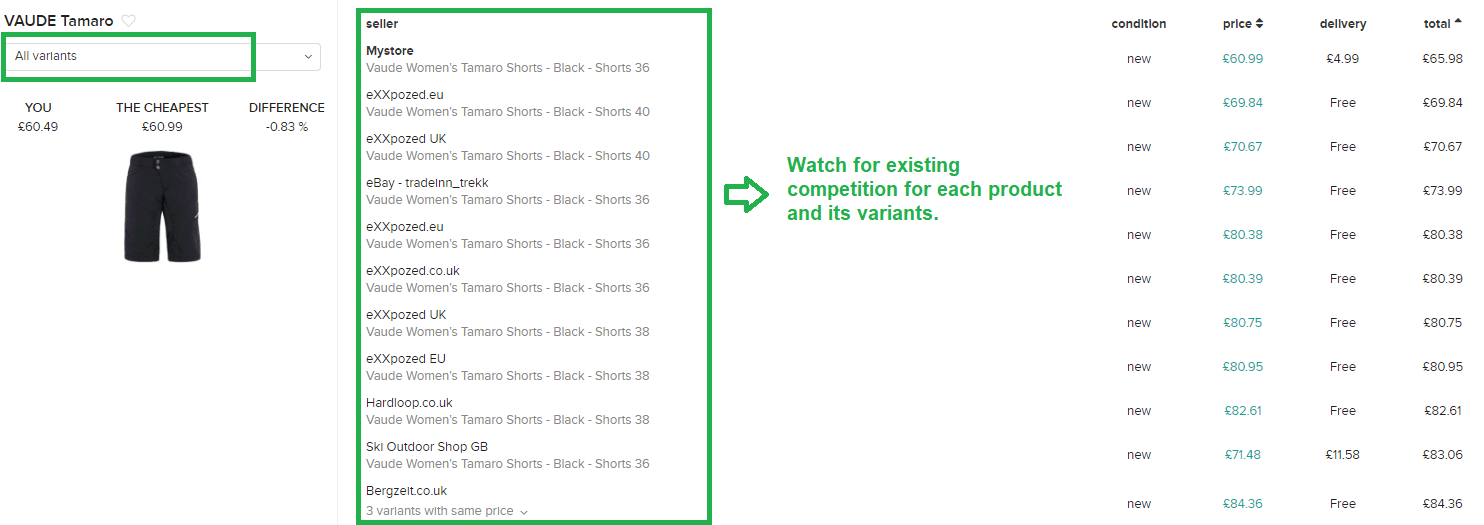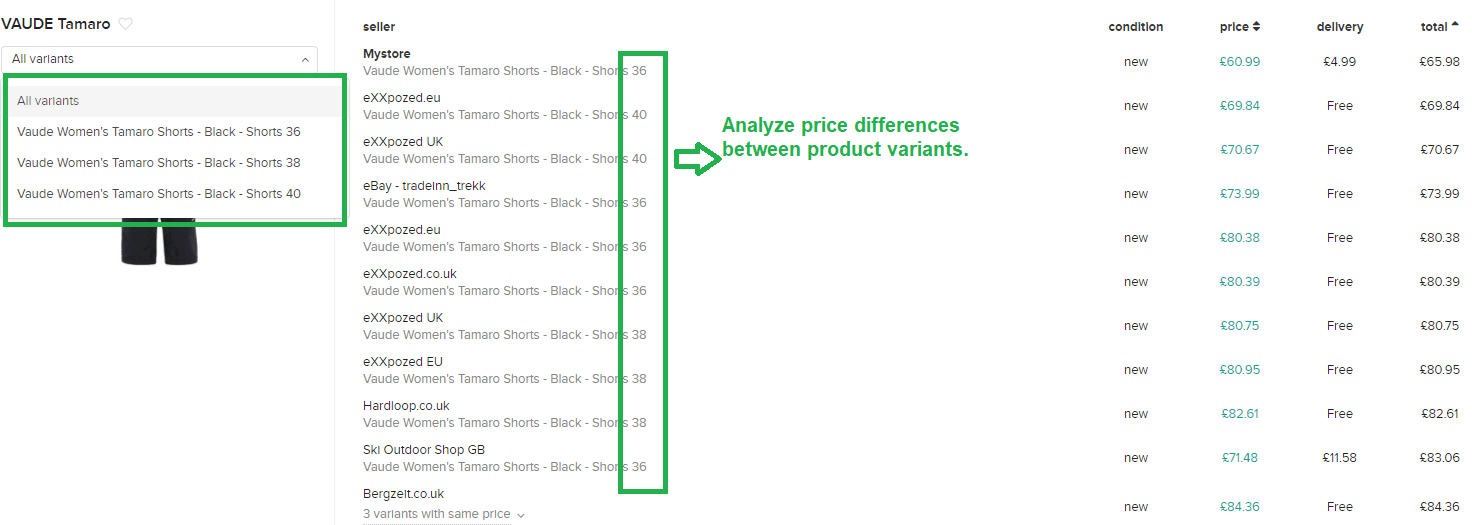One of the most important factors in a consumer’s choice of product is price. It is quite normal to see a customer leave the shopping cart at the last minute because he or she had not noticed that such a cheap product was actually for children. Product variants are necessary elements to have a greater offer that can reach more customers. The sports products industry is one where this attribute is most clearly seen: sports shoes or T-shirts have variants that correspond to the number, size and color.
In this guide, we’ll be explaining how variants can have an impact in your store positioning for certain products and we’ll be going through the process of how to analyze price changes in each of those variants and how that is particularly relevant for any retailer willing to have a clear view of what is going on with price variations in the different marketplaces.
Variants across product categories
Product variants are a surefire way to boost the performance of your e-commerce, as adding different options for a product increases the exposure of the given product in an exponential way. To add variants in your e-commerce will cause an increase in the number of clicks that your e-commerce receives as your products will appear in more customer searches. The user experience will also benefit as having a wider range of products will allow buyers to spend more time in your e-commerce.
In the sporting goods industry, the list of product variants is extensive, highlighting:
- Sneakers
- Sports equipment (T-shirts, pants, jackets, etc.)
- Team shirts
- Caps
- Balls
Being a retailer in the sports industry, you probably deal with a great diversity of product categories. Such categories can be directly related to the sports vertical you’re dealing with (winter sports, hiking, home fitness, etc.) or those can be intimately related to how you organize your product catalog. Nevertheless, what is really true is that within each of those categories you may find that you have products that come with several variants due to factors such as color and size, and such variants can have an impact in price.


Analyzing price differences
When analyzing price differences across product variants, we may find ourselves facing different scenarios:
- You are pricing product variants equally
- Your competitors are pricing product variants differently
- Competition in each of the variants is different.
Analyzing price differences in product variants
It is important to assess what is the behaviour of prices in product variants and across different retailers, given that this is going to influence how we react to market price changes. These differences in prices may be due to differences in competition in each of the products. Perhaps very few competitors or even a couple may be competing for a specific product variant in the market while the rest of competitors are out of stock. Or, on the other hand, it may happen that there’s a lot of competition for another variant and a specific retailer may lead the price change.


We also need to take into account that perhaps, there’s more demand for certain product variants than for others, so that is why you need to pay close attention to what is going on in the market regarding price variants for these items.

Analyzing price differences in different markets/countries
Price differences may happen not only in several product variants across several competitors in the market, but also in product variants across several countries. So, in case your sporting goods e-commerce business works with different verticals in different countries, it is really important to analyze how competitors in each market are behaving.

Detect opportunities to gain competitive advantage
At this point it is clear that in order to discover growth opportunities to become more competitive it is essential to monitor the competition in the different markets and countries where we operate. It is important to identify which rivals are competitive on the whole, and if rivals are charging shipping costs for specific products, which could make the price go up. You need to assess whether it is appropriate to be the only competitor without shipping costs, as it is not sustainable to reduce profit margins in order to increase sales.
In order to gain competitive advantage it is crucial to have a global vision of the market and to know whether there is a lot of competition for a given product. If you need to equal your store to the rest of competitors,you have to be sure that you will be able to stand a price drop on your products and if your cost price and intended profit margin allow so. To have room for maneuvering you have to have enough margin to be more competitive than the rest of competitors. You can always safeguard a certain margin using pricing tools.
If you study the competition and the market, you can see that if they are setting unsustainable prices on average from the point of view of your pricing strategy you may need to review your current conditions with your providers and check if there is some room for negotiation.
On the other hand you can identify when your store has a clear advantage by being the only one with availability for a certain product and there is little competition for given product variants. Otherwise, you can observe if any of your competitors are the one benefiting from such a situation.
Final Thoughts
Throughout this guide we have seen the benefits of having an extensive combination of options for your products, which will lead to better sales performance. Product variants are a must for stores in the sporting goods industry, so it is necessary to research the market and competition to understand the influence of price changes on product variants.
In order to gain a global vision of a market as extensive and crowded as the sports products market, it will be necessary to use tools that automate the monitoring processes to be able to detect in a short time change patterns according to the product variable, in different verticals and countries.







